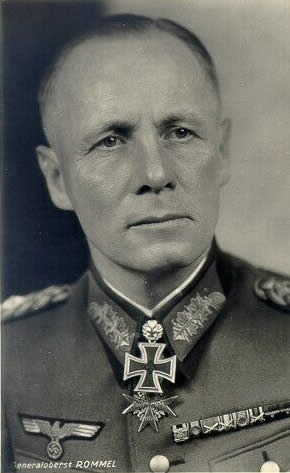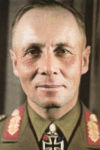The War in the Air
Specially contributed by Capt. NORMAN MACMILLAN, M.C., A.F.C.
The War Illustrated, Volume 6, No. 131, Page 8, June 26, 1942.
A new phase in the air war over Europe began on the night of Friday, May 29, the thousandth day of the war. Seven days earlier Bomber Command raided St. Nazaire, German U-boat base in Occupied France. Then a week of bad weather deferred large-scale operations. On the night following the thousandth day the R.A.F. struck at German "auxiliary" war industry.
For those three hours onwards from midnight, the Gnome-Rhone aero-engine factory (1,000 workers) at Gennevilliers, the Goodrich rubber factory at Colombes, and other targets near Paris were bombed. Gennevilliers power station, supplying the whole industrial area of north-west Paris, was razed.
On the following night, with the moon rising, almost to the full, the greatest bombing force the world has ever seen rose from the aerodromes of the United Kingdom and flew to raid Cologne, the third greatest city in Germany; 1,130 four-engined Stirling, Halifax, Lancaster and twin-engined Whitley, Wellington and Hampden bombers -a force twice as numerous as the largest sent by Germany over any British city, and transporting a quadrupeled bomb load- were concentrated over the target, and in 90 minutes dropped 3,000 tons of bombs. (Compare this with the total of 6,402 tons dropped by British air forces on the Western Front from July 1916, to November 1918.)
Air Vice-Marshal J.E.A. Baldwin and other senior officials flew with the crews under their command.
Fighter, Coastal and Army Cooperation Commands made diversionary attacks against aerodromes and other targets.
The German anti-aircraft defences, nowhere greater than around Cologne and its approaches, were saturated by the weight and plus ten-aircraft-a-minute speed of attack. Soon they were unable to maintain efficient defence. The fires of Cologne were visible from aircraft flying over the Dutch coast 140 miles distant. For several days after the attack reconnaissance aircraft were unable to photograph Cologne owing to the pall of smoke rising from the burning city to 15,000 feet.
Two nights later a force of 1,036 bombers attacked the Ruhr. Essen was the main target, but in the factory-smoke-filled air of the moonlit sky, it is not always easy to pick out a given factory. Captains of aircraft were given freedom to select alternative targets in Duisburg, Oberhausen and elsewhere; the size of the target area, measuring about 40 miles by 15, enabled this large force to operate despite somewhat unfavourable cloud conditions.
All aircraft in both raids were British in design and manufacture. Their all-British crews came from the Commonwealth. Forty-four aircraft were lost in the first four-figure raid; 35 in the second; a percentage of 3.66. The rate of aircraft loss, which is held to be too costly to replace, was fixed by Air Chief Marshal Sir Hugh Dowding, who won the first Battle of Britain against the Luftwaffe, at 10 per cent.
Air Marshal A.T. Harris, C.-in-C. Bomber Command, who organized the great-scale raids, is one of the world's outstanding air commanders. I remember him as a fighter pilot in 45 Squadron in 1917, when, flying Camels in France, he scored successes against the Albatrosses of the German air force. He invented an ingenious device for counting the number of rounds fired from the twin Vickers machine-guns. His ante-Cologne order to his bomber crews was typical: "Let them have it on the chin."
Lt.-General H.H. Arnold, Chief of the U.S. Army Air Forces, and Rear-Admiral John H. Towers (who commanded the four U.S. Navy Curtiss flying-boats that set out to fly the Atlantic in 1919, and who taxied his boat to Horta, Azores, after forced-landing on the ocean), now Chief of the U.S. Navy Bureau of Aeronautics, came to England during the last week in May (see illus. p. 28). Soon U.S. crews and bombers will join the British crews in the raids against Germany.
During the day preceding the Ruhr raid, about 1,000 fighters of Fighter Command made sweeps over occupied territory. Frequently escorting Boston and Hurribombers, these fighters have kept up their constant pressure on the west central coastline of Europe and its hinterland.
Germany's threatened reprisal raids on two successive nights were made against Canterbury. Damage was done. The attacks were on a relatively small scale. German aircraft losses were from 10 to 12 per cent, including those shot down over bases in Europe.
Medium-scale British raids were directed against Essen and Bremen on June 2 and 3.
For two nights before Thursday, May 28, when Rommel launched his latest attack in Libya, Axis aircraft raided Allied rear areas, keeping troops alert, but doing little damage. Allied aircraft raided enemy bases, camps, aerodromes, and motor transport in Africa and Sicily. With the outbreak of battle, every unit of the R.A.F. roared into action against troops, supply columns, fuel tankers, and aerodromes; aircraft included Hurricanes, Tomahawks, Kittyhawks, Bostons, Beaufighters, and, for the first time in Africa, Spitfires.
Three U-boats were reported sunk by Brazilian coast patrol aircraft off Pernambuco between May 23 and 28. In the Pacific, Allied air raids were made against Amboina, Lae, Rabaul. Five Japanese Zero fighters were shot down.
Statements by General Alexander after the retreat of the British Army from Burma to India, and by Admiral Sir Andrew Cunningham on relinquishing the Mediterranean Command, which he had held since January 1939, show that it is now generally recognized that air cover is an essential pre-requisite to success in all operations by land or sea. In the oceans aircraft carriers must provide the facilities to achieve that end.
U.S. Army and R.A.F. aircraft attacked Japanese forces in Burma, raiding aerodrome, river craft, and power station at Rangoon, the aerodrome at Akyab, steamers on the Mayu and Chindwin rivers, barracks and stores at Kyaukpyu. The American Volunteer Group from China bombed Japanese fortified positions west of the Salween river.
British, American and Chinese pilots flew 8,616 refugees -women and children first- from Burma to India. U.S. Army Air corps carried 4,228. One plane brought out 72 refugees in one trip. R.A.F. planes dropped 100,000 lb. of food to evacuating parties on the ground, and food, boots, and shoes to British troops retreating over the hills.
The Commonwealth -Australia, Canada, New Zealand, United Kingdom- Air Training Plan has been extended to March 31, 1945, by conference in Ottawa. It assures the training of crews in adequate numbers for the huge air programme that lies ahead. Britain will contribute half the cost.
Russo-German air operations have remained tactically directed towards targets in the field and forward supply routes on land and at sea. The Russian Air Force uses rocket propulsion to discharge anti-tank bombs from Stormovik low-level bombers, and have applied the same gear to their Hurricane (British-built) bombers.
The U.S. Curtiss-Wright C43 "Commando" army transport aeroplane can carry field guns and reconnaissance cars.
Previous and next article from The War in the Air
The War in the Air
In the fast-moving panorama of the air war, some events appear to invest themselves with the significance of isolation. Dramatic as these happenings ofter are, it is a mistake to regard them as things
Index
Previous article
Well Done, Horses (and Dogs) of the Red Army!
When we pay tribute to the magnificent valour of Soviet Russia's fighting men, let us not forget the horses -yes, and the dogs, too- without whom the battle could not have been sustained, and who, lik
Next article
Back from Cologne, Greatest Raid in History
Back from their great raid over Cologne, some members of the crews are celebrating with smiles and the familiar "thumbs up" signal the doom of many a Nazi munition works. -->On May 30, 1942, the





